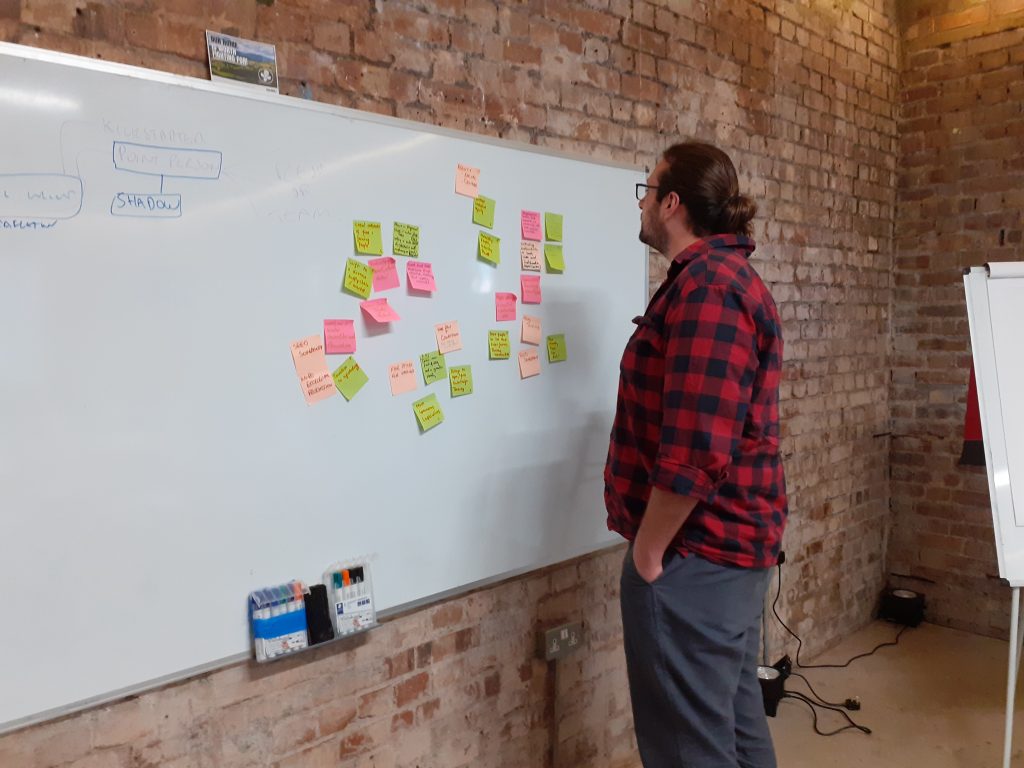The first achievement of the Food Data Collaboration has been to create our collective vision and mission. This is the first milestone by our Governance Group. In this short blog Lynne Davis dives into our processes to date.
Why is a Vision and Mission statement important?
From the early inception we’ve envisaged the Food Data Collaboration as building a commons that enables collaboration in short food supply chain systems. Data is the glue that helps the collaboration to work together, but as a commons we need a lot more than glue. As the work of Elinor Ostrom demonstrates, a commons requires clear governing principles to function. We must set clear boundaries, with processes for resolving disputes and imposing sanctions if these boundaries are violated. We need clear processes for enabling engagement and adaptation as our commons evolves over time.
Before we could start to think about setting boundaries to our commons, it was necessary to develop a shared understanding of what we aim to achieve with our commons and how we mean to achieve it. We need to agree where we are going and how we’ll get there. We need a vision and mission.
How we developed our Vision and Mission
Our initial Governance Group is formed of representatives of organisations that aligned with the original inspiration of the project. The group was brought together to represent food producers, retailers, policy campaigners and technical platforms. After some initial discussions over Zoom calls, we confirmed the membership of the group for the initial meetings such that we could take steps to build trust. Many of the group knew each other from other work in the sector, however these initial trust building stages remain important. This is particularly important for some of the technical platforms involved, as this work to build a collaborative space flies against the convention of competition when it comes to funding tech. I expect that we will encounter this running theme repeatedly when aiming to build a collaborative space for commercial entities to operate within, which I personally feel will be one of the more groundbreaking and radical aspects of this project.
March 2022 meeting in London
We held our first face-to-face meeting of the Governance Group in London on March 25th 2022. It was great to be in a room with like minded individuals. The conversations were free flowing, supportive and at times vulnerable. It was clear that there was a lot of trust already in the room, which is a great place to be building from.
A classic session with post-it notes and white boards enabled us to identify the important parts of our vision and mission.






We then went back to online mode, compiled the notes and started getting into the details in a Google Doc. You can see our workings here, including many of our comments as we came to agreement on the finer points and details.
Even before we started, this group was very aligned.
This meant that agreeing the guiding principles was relatively easy. We talked this through and agreed that our responsibility to these commons is to build the framework for a race to the top – countering the race to the bottom in economic, social and environmental terms of our industrial food and farming system. So the fact that our small group is well aligned and carries high aspirations feels fitting for this stage of the project. Radical aspirations require this kind of strong starting point.
And so, without further ado, here is the vision and mission of the Food Data Collaboration.
Our Vision
- A world in which all food is produced agroecologically.
- A world in which everyone working in food systems, from farm to fork, works with dignity and respect, earning a fair living with decent working conditions and rights.
- A world in which every meal is truly nourishing for people, families and communities, and is affordable and accessible for all people.
Our Mission
- We will increase the amount of food bought and sold through farmer-focused supply chain models. Farmer-focused supply chain models increase producer margins and create more and better jobs for food system workers.
- We will reduce barriers to deeper collaboration. Expansion of farmer-focused supply chain models has been limited as margins are tight, meaning creating good livelihoods, and accessible pricing is near impossible. In part this is because farmer-focused supply chain models often don’t benefit from the economies of scale of conventional models.
- We will work collaboratively to develop a common data infrastructure. Deeper collaboration can be achieved by enabling data to flow freely through the systems, while retaining control and ownership.
- This collaborative infrastructure will benefit supply chains at multiple scales. We believe that diversity is key, meaning supporting appropriate scales from the hyper-local, regional, national and international. We draw inspiration from the Food Zones model.
- This network of collaboration will ensure that all produce that the network facilitates to be bought and sold will be produced in line with our vision of a truly regenerative, fair and nourishing food system.
- This network of collaboration will be managed through collective and common governance principles that will ensure the network is working toward the vision.
Photo by Joel & Jasmin Førestbird on Unsplash.

